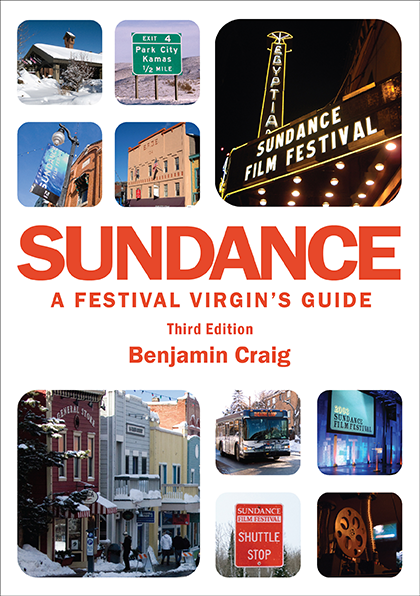History of the Sundance Film Festival (Part 5)
By Benjamin Craig
< Back to Part 4: Back to Reality
"Harvey's not going to like this"
With the independent film renaissance in full swing and Sundance firmly in the centre of it, the 1996 festival bowed to record crowds (approximately 10,000 attendees) and the largest slate of films to date. Another record set during that year was the sum of money spent by acquisition executives to get their mitts on the next "Clerks" or "The Brothers McMullen". Indeed, the acquisition activity during the festival was getting so cutthroat that it often spilled over into open argument; one infamous incident involved Miramax boss Harvey Weinstein and Pandora Cinema's Jonathan Taplin engaging in a public shouting match in a Park City restaurant over which company had actually closed the deal for the Australian movie "Shine". And all of this against the backdrop of one of the heaviest Park City snowfalls during the festival in many years (10 feet in 10 days). Memorable films in 1996 included the Campbell Scott/Stanley Tucci co-directed "Big Night", Mary Harron's "I Shot Andy Warhol", Todd Solondz's "Welcome to the Dollhouse", which won the Grand Jury Prize, Lee David Zlotoff's Audience Award winner "Care of the Spitfire Grill", and Leon Gast's documentary on the Muhammad Ali/George Foreman fight, "When We Were Kings".
The 1997 festival brought with it something of a ‘market correction' in terms of business deals. A more sober approach to acquisitions became the norm following poor box-office performance by most of the previous year's buzz films. But this didn't dampen the quality of the festival itself, which featured another impressive line-up of films, including many from amongst Sundance alumni like Errol Morris, Tom DiCillo, Victor Nunez, and Kevin Smith, as well as a major retrospective of the work of German new-wave giant Rainer Werner Fassbinder.
With another record attendance in 1997, Sundance was literally bulging at the seams. Problems with venue sizes and public transportation - not to mention the fact that it had become common for the entire telephone system in Park City to crash on a regular basis under the massive load - began to highlight a question the festival hadn't had to face before: was the event getting too big for Park City to handle? A few voices suggested that the festival should move back to Salt Lake City to provide better facilities for an event of that size. Vehement opposition to a move however, came from Park City itself; businesses and local officials were unwilling to give up an event which by that point was generating more than $20 million of direct investment into the town each year.
Sundance 1998 went ahead in Park City as planned, the solution to overcrowding woes coming in the form of a more streamlined approach to the event's organisation and the completion of the 1,300-seat Eccles Center, which alleviated the crunch in screening space. The crowds were still there - the Park Record's Tom Clyde noted that the town was full of "people with a clear vision for film, but only a vague notion of winter at 7,000 feet" - and the phone network still crashed from time to time, but that didn't seem to bother most festival attendees, who were there simply to enjoy the films. The telephone system was eventually beefed up for the Winter Olympics in 2002.
The films in 1998 included Vincent Gallo's debut "Buffalo 66", Don Roos' "The Opposite of Sex", David Mamet's "The Spanish Prisoner", Peter Howitt's "Sliding Doors", and Darren Aronofsky's "Pi". Controversy also surrounded Nick Broomfield's documentary "Kurt and Courtney", which was dropped from the festival in the face of legal threats by Courtney Love, allegedly over music rights. Slamdance also decided to pass, so perhaps with less to lose (and more to gain) than the others, upstart alternative festival Slamdunk agreed to screen the film. The lawsuit never materialised.
If the charge levelled by some that Sundance in the ‘90s had become more about the hype than the films is to be believed, then it was fitting that the 1999 festival bought a climax to the excitement that had never been witnessed before and has never been repeated. While the festival quietly celebrated its 21st anniversary, "Blair Witch" mania broke out of the fabled midnight screenings, and the film went on to become the most successful independent release of all time, grossing more than $140 million in the U.S. alone. If "El Mariachi" had revitalised the DIY filmmaking ethic six years before, the success of "The Blair Witch Project" dragged it fully into the spotlight. But the 1999 festival went beyond the hype surrounding "Blair Witch". Doug Liman also presented "Go", his follow-up to indie hit "Swingers", and the German film "Run Lola Run" went down well with festivalgoers, bagging the World Cinema Audience Award.
Get Your Copy Now

The essential handbook for filmmakers, film fans, and film industry professionals looking to attend the Sundance Film Festival. Available in paperback and digital formats.
Find Out More >
